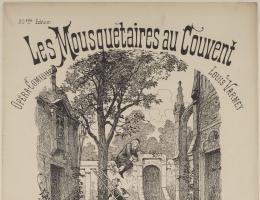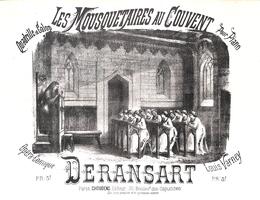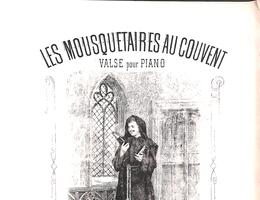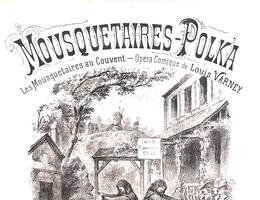Les Mousquetaires au couvent
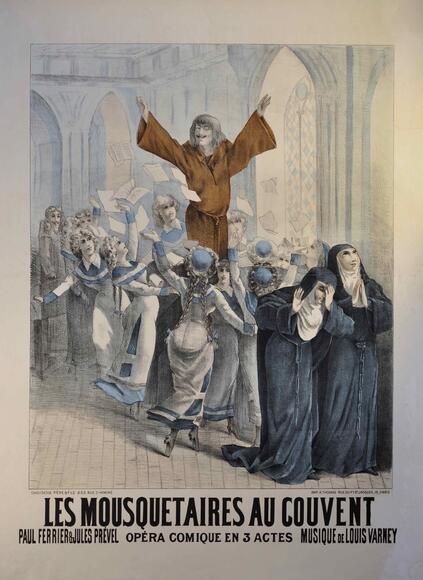
Opéra-comique en 3 actes.
An operetta in three acts set to a libretto by Jules Prével and Paul Ferrier, taken from a vaudeville by Amable de Saint-Hilaire and Dupont entitled L’Habit ne fait pas le moine (1835), Les Mousquetaires au couvent was first performed at the Bouffes-Parisiens on 16 March 1880. The action is set under the reign of Louis XIII, in Touraine, where the musketeer Gontran is in love with Marie, niece of the regional governor and a boarder at the Ursuline convent. In collusion with his friend, Narcisse de Brissac, and with the help of an unscrupulous abbot called Bridaine, Gontran plots to kidnap his beloved. Wearing cassocks stolen from some pilgrims from Palestine, the two accomplices gain admittance to the convent. This enables Brissac to meet Louise, another of the governor’s nieces. The two friends’ escapade leads to some incredible situations. In Act II, using colourful language, the two musketeers make a conspicuous entrance among the nuns; then, during a meal, Brissac becomes drunk and improvises a sermon on love which cannot fail to cause a scandal. Locked in a turret, the two friends only owe their release to a final turnaround: the two pilgrims whose cassocks they stole were, in fact, bogus monks intent on assassinating Cardinal Richelieu. Brissac and Gontran have therefore unwittingly thwarted a political plot. Rewarded for their efforts, they are allowed to marry their sweethearts from the convent. The work was a huge success, which led to it being translated into Russian and performed in St Petersburg in 1881. It was also translated into German and performed in Vienna the same year, then translated into Italian and performed in Rome in 1883. In Paris, the operetta was regularly revived until World War One, then again after 1945.

